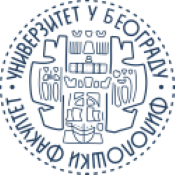Learning Grammatical Topics through Music as an Intercultural Link. Didactic Proposal for a Summer Course at the University of Las Palmas de Gran Canaria
DOI:
https://doi.org/10.18485/beoiber.2018.2.1.13Abstract
The aim of the study is to enhance music as a didactic resource for the correct acquisition of grammatical knowledge of Spanish considered problematic at the time of approaching the study of our language: the use of the subjunctive, the unstressed personal pronouns and the verbs ser and estar. We also try to stimulate interest in research and personal autonomy, as well as encouraging intercultural relations and reinforcing the values of tolerance and camaraderie. It is a didactic proposal for the classroom of Spanish as a foreign language (ELE) aimed at students of level B2 in accordance with the guidelines of the Common European Framework of Reference for Languages.Broadly speaking, an active methodology is proposed, where tasks act as acquisition engines of communicative competence, applying the theory of practical assumptions such as songs. Finally, regarding the research methodology, we will stop at the presentation of the theoretical foundations, as well as the methodological approaches, which we consider fundamental, since they are the foundation of our proposal.Regarding the results of our field study, we have been able to meet the aims set at the beginning, that is: the acquisition of fixed grammatical knowledge and the achievement and encouragement of intercultural relations among students, thanks to the mentioned methodology implemented in the ELE classroom.Key words: interculturality, songs, grammar, lexicon.References
Bernabé Villodre, María del Mar. «La educación musical como nexo de unión entre culturas: una propuesta didáctica para los centros de Enseñanza». Tesis doctoral. Universidad de Murcia, 2011. Tesis doctorales en red. Web. 20 Sep. 2016.
Betti, Silvia. «La canción moderna en una clase de E/LE». Cuadernos Cervantes, 50 (2004): 26‒31. Web. 14 Sep. 2016.
Castro Yagüe. Mercedes. 2010. «Música y canciones en las clases de E/LE». Memoria fin de Máster. Web. 14 Sep. 2016.
Consejo de Europa. Marco Común Europeo de Referencia para las lenguas: aprendizaje, enseñanza, evaluación. Madrid: MECD / Anaya, 2002. Impreso.
Corrales-Martín, Norma. «Enseñanza de la gramática y de la cultura hispánicas a través de música caribeña». Cauce, 24 (2001): 405‒416. Centro Virtual Cervantes. Web. 20 Sep. 2016.
Instituto Cervantes. Plan Curricular del Instituto Cervantes: Niveles de referencia para el español. Madrid: Instituto Cervantes / Biblioteca Nueva, 2006. Impreso.
Krashen, Stephen D. Principles and Practice in Second Language Acquisition, Hertforshire: Prentice-Hall International, 1987. Impreso.
Rodríguez López, Beatriz. «Las canciones en la clase de español como lengua extranjera». Alfredo Álvarez (ed.), Actas del XVI Congreso Internacional de la ASELE, Oviedo: Universidad de Oviedo, 2005: 806‒810. Impreso.
Rojano, Jesús et al. La música como intercambio de culturas. Propuesta didáctica para secundaria. Madrid: Fere, 2004. ALBOAN. Web. 20 Sep. 2016.
Betti, Silvia. «La canción moderna en una clase de E/LE». Cuadernos Cervantes, 50 (2004): 26‒31. Web. 14 Sep. 2016.
Castro Yagüe. Mercedes. 2010. «Música y canciones en las clases de E/LE». Memoria fin de Máster. Web. 14 Sep. 2016.
Consejo de Europa. Marco Común Europeo de Referencia para las lenguas: aprendizaje, enseñanza, evaluación. Madrid: MECD / Anaya, 2002. Impreso.
Corrales-Martín, Norma. «Enseñanza de la gramática y de la cultura hispánicas a través de música caribeña». Cauce, 24 (2001): 405‒416. Centro Virtual Cervantes. Web. 20 Sep. 2016.
Instituto Cervantes. Plan Curricular del Instituto Cervantes: Niveles de referencia para el español. Madrid: Instituto Cervantes / Biblioteca Nueva, 2006. Impreso.
Krashen, Stephen D. Principles and Practice in Second Language Acquisition, Hertforshire: Prentice-Hall International, 1987. Impreso.
Rodríguez López, Beatriz. «Las canciones en la clase de español como lengua extranjera». Alfredo Álvarez (ed.), Actas del XVI Congreso Internacional de la ASELE, Oviedo: Universidad de Oviedo, 2005: 806‒810. Impreso.
Rojano, Jesús et al. La música como intercambio de culturas. Propuesta didáctica para secundaria. Madrid: Fere, 2004. ALBOAN. Web. 20 Sep. 2016.
Downloads
Published
2018-05-29
How to Cite
Rodríguez Rodríguez, M. N., and N. M. Sosa Chacón. “Learning Grammatical Topics through Music As an Intercultural Link. Didactic Proposal for a Summer Course at the University of Las Palmas De Gran Canaria”. BEOIBERÍSTICA - Journal of Iberian, Latin American and Comparative Studies (ISSN: 2560-4163 Online), vol. 2, no. 1, May 2018, pp. 193-00, doi:10.18485/beoiber.2018.2.1.13.
Issue
Section
DIDACTICS
License
Authors who publish with this journal agree to the following terms:
- Authors retain copyright and grant the journal right of first publication with the work simultaneously licensed under a Creative Commons Attribution-ShareAlike 4.0 International License that allows others to share the work with an acknowledgement of the work's authorship and initial publication in this journal.
- Authors are able to enter into separate, additional contractual arrangements for the non-exclusive distribution of the journal's published version of the work (e.g., post it to an institutional repository or publish it in a book), with an acknowledgement of its initial publication in this journal.
- Authors are permitted and encouraged to post their work online (e.g., in institutional repositories or on their website) prior to and during the submission process, as it can lead to productive exchanges, as well as earlier and greater citation of published work (See The Effect of Open Access).













